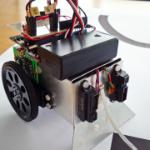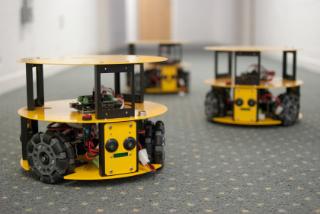What are Cyber-Physical Systems?

Cyber-Physical Systems (CPS) are systems composed of physical systems (hardware), software systems and potentially other types of systems (e.g., human systems). These are closely integrated and networked to deliver some global behaviour.
CPS will often, therefore, include hardware such as sensors, actuators and similar embedded systems that interact with the real world as well as with complex software elements. Examples of CPSs can be found in agriculture, transport, home automation, healthcare, energy and many other socially important domains. They are increasingly used to build user-friendly environments that can:
- Monitor health of patients at home or at a hospital, through wearable sensors or non-intrusive environmental monitors, to ensure that sub-optimal vital signs are recognised early and emergencies responded to immediately. This could be used to help patients in hospitals, or to provide assisted living and help for elderly living alone.
- Deliver integrated public transport and safe, efficient road traffic systems. Time spent travelling can be reduced if travellers have simple, cost-effective ways to switch travel mode with integrated tickets that are accepted across independent transport providers and up-to-date, accurate information on where there are currently jams or backlogs, and where in the network there is spare capacity not being used. A variety of devices and sensors are deployed roadside and trackside to monitor current conditions, make predictions and manage traffic effectively, or to improve safety of pedestrians, cyclists and bus or train passengers.
- Secure cost-effective, traceable food supplies. Distributed sensors, vehicles and complex decision-making support software is needed in agriculture to allow farmers to achieve the best possible yield in return for their investments and to react to conditions on the ground, whilst CPSs could be deployed throughout the food chain to ensure that our food supplies are traceable.
- Provide secure and energy-optimised buildings. Going beyond simple temperature and humidity sensors, smart homes and offices of the future will use varied data inputs such as weather forecasts and knowledge about the time of day, season and building usage to provide comfortable environments with the minimum energy consumption.
- Produce reliable, sustainable energy. Delivering sufficient energy with the minimum possible wastage is a key challenge facing Europe over the next few decades. CPSs provide key technologies to support the transition from power generation by a few large suppliers to large numbers of producers-consumers (e.g., homes and businesses with solar panels or wind turbines). CPS technologies support smart grids, which can allow power consumers to implement intelligent, efficient energy usage policies.
 CPSs have the potential to bring about significant social benefits, and so being able to design and build secure CPSs that deliver consistent and dependable emergent behaviour is important.
CPSs have the potential to bring about significant social benefits, and so being able to design and build secure CPSs that deliver consistent and dependable emergent behaviour is important.
However, CPSs bring a number of challenges when it comes to design:
- Modelling techniques are used to examine and optimise the proposed designs before prototypes are built. This can help ensure good quality and cost effective designs. CPS of the future will require greater integration of hardware and software models, together with models of other complex aspects of the CPS environment such as human behaviour.
- For many CPSs, only partial information may be available about some of the constituent systems, so modelling techniques must be capable of coping with this and still delivering enough information to allow us to place reliance on the finished CPS's behaviour.
- It can be very difficult to design cross-cutting behaviours such as fault tolerance, as well as security or performance, into CPSs.
Newcastle's CPLab participate in major research programmes to extend the state of the art in these challenges and more.

